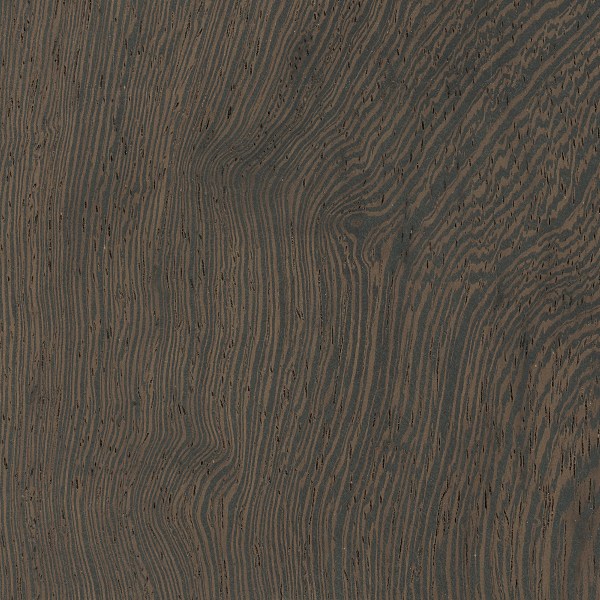Wenge
Color/Appearance: Heartwood is medium brown, sometimes with a reddish or yellowish hue, with nearly black streaks. Upon application of a wood finish (particularly an oil finish) the wood can become nearly black.
Grain/Texture: Grain is straight, with a very coarse texture. Low natural luster.
Endgrain: Diffuse-porous; large to very large pores in no specific arrangement, very few; solitary and radial multiples of 2-3; dark brown mineral deposits occasionally present; medium rays not visible without lens, normal spacing; parenchyma vasicentric, confluent, with wide bands of parenchyma typically as thick as the pores.
Rot Resistance: Very durable, and resistant to termite attack.
Workability: Can be difficult to work with hand and machine tools. Blunts tool edges. Sands unevenly due to differences in density between light and dark areas. Very splintery—care must be used when handling unfinished wood with bare hands, as splinters have an increased risk of infection. Very large pores can be difficult to fill if a perfectly smooth/level finish is desired.
Odor: Wenge has a faint, slightly bitter scent when being worked.
Sustainability: This wood species is not listed in the CITES Appendices, but is on the IUCN Red List. It is listed as endangered due to a population reduction of over 50% in the past three generations, caused by a decline in its natural range, and exploitation.
Common Uses: Veneer, paneling, furniture, turned objects, and musical instruments.
Comments: Usually pronounced WHEN-gii or WHEN-ghay, the wood has excellent strength and hardness properties, and is also dark enough to be used as a substitute for ebony.



